The official data the National Bureau of Economic Research (the arbiters of U.S recession declarations, also known as NBER) are looking at to determine the coincident (current) status of the U.S economy, shows the economy may be slowing, but its not down or even OUT yet:
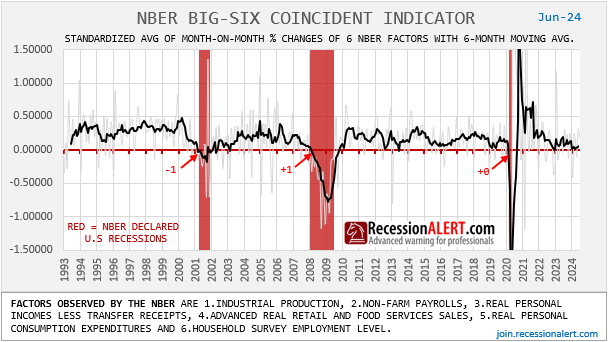
It is hard to imagine the FED are not taking guidance from this either when pondering rate cuts.
Looking at the the month-on-month growth index that the headline index is created from with a six-month average, one could even conclude that things may be starting to look like they are even picking up:
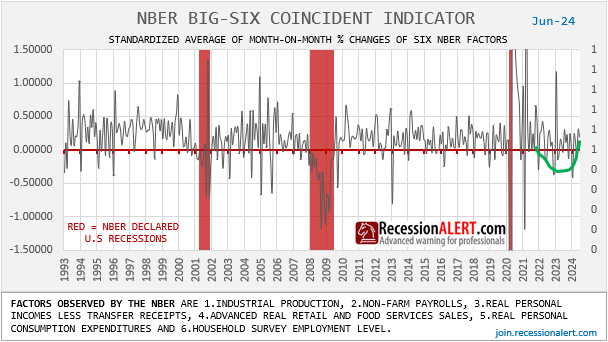
Even a component dissection does not look half bad:
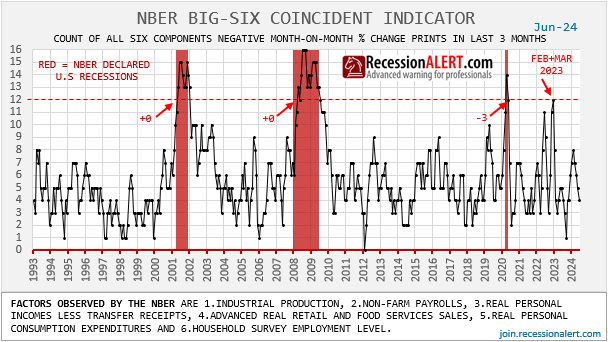
There is no doubt the U.S economy is vulnerable to external shock (with no buffers) when its six-month averaged growth index (black line, first chart above) languishes at the borderline between expansion and contraction.
And despite last weeks mediocre jobs report, and rise in unemployment rate that even triggered the Sahm recession indicator, this mediocrity is yet to show up in the non-farm payrolls and household survey employment data being looked at in this NBER BIG SIX coincident indicator. Not even a blip.
There is no doubt the NBER model is being aided by Non-farm payrolls and Household Survey Employment data that stubbornly refuse to concur with the rising unemployment rate. But lets be honest here, these employment indicators are laggards for the best part. In fact, examining a set of cyclically sensitive leading labor market indicators, we are led to believe that the unemployment rate is set to continue rising in the near future, albeit at a slower pace:
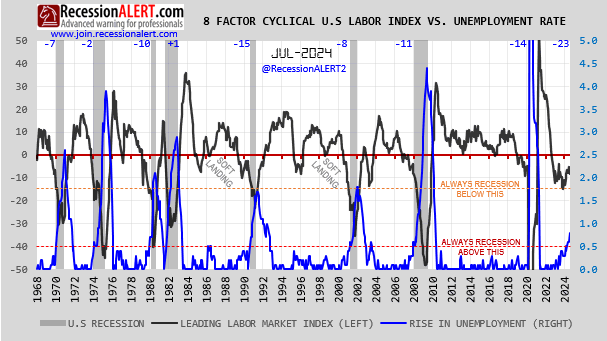
The unemployment rate has been a very reliable real-time indicator of recession through dozens of the last business cycles and even the popular SAHM-Rule and its SCHANNEPP derivative have finally concurred with the 52-state and 400-metro derivatives (as discussed in our research note) and triggered a recession alert:
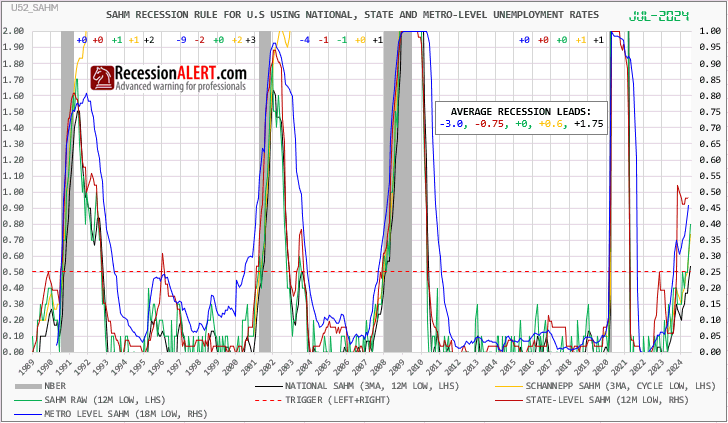
The unemployment rate has been a very reliable real-time indicator of recession through dozens of the last business cycles and even the popular SAHM-Rule and its SCHANNEPP derivative have finally concurred with the 52-state and 400-metro derivatives (as discussed in our research note) and triggered a recession alert:
Our research has shown that if we were to add the unemployment rate as another reliable coincident employment indicator to the NBER model, it would now be in recession territory. The reason the payrolls data and the household survey used in the NBER model are not weakening in sympathy with the rising unemployment rate are not clear, but at this point, historic levels of immigration are being cited. Whilst this may explain things on a national level, its hard to believe that immigration is so widespread that it has resulted in unemployment rates in a wide swathe of US states and even metros to explode higher.
So if we are just looking at the officially accepted coincident monthly data, and ignore leading data, unemployment rate and geopolitical risks – its hard to see why the FED would be compelled to panic into a rate cut cycle right now.
Regardless of the rising unemployment rate at national, state and metro levels, and the leading employment data that hints at continued rising of the unemployment rate, when looking purely at the data the NBER are looking at, which is what the NBER model was designed for, we can conclude that the best way to describe the current coincident measure of the economy from the NBER (and perhaps even the FED) viewpoint is therefore: “VULNERABLE, but NO RECESSION IMMINENT YET.”
SUMMARY:
Are we taking the upcoming rates cuts expectations and prediction markets too seriously since the coincident data doesnt look that bad? Will record levels of immigration eventually be able to explain away the divergence between the unemployment rate and other coincident economic indicators? Or perhaps we are erroneously ignoring or downplaying the rise in the unemployment rate?
Regarding rate cuts, we should be careful what we wish for, since the first rate cut in a hiking cycle is a better and more timely recession indicator than the yield curve. Just something to ponder about.

Comments are closed.